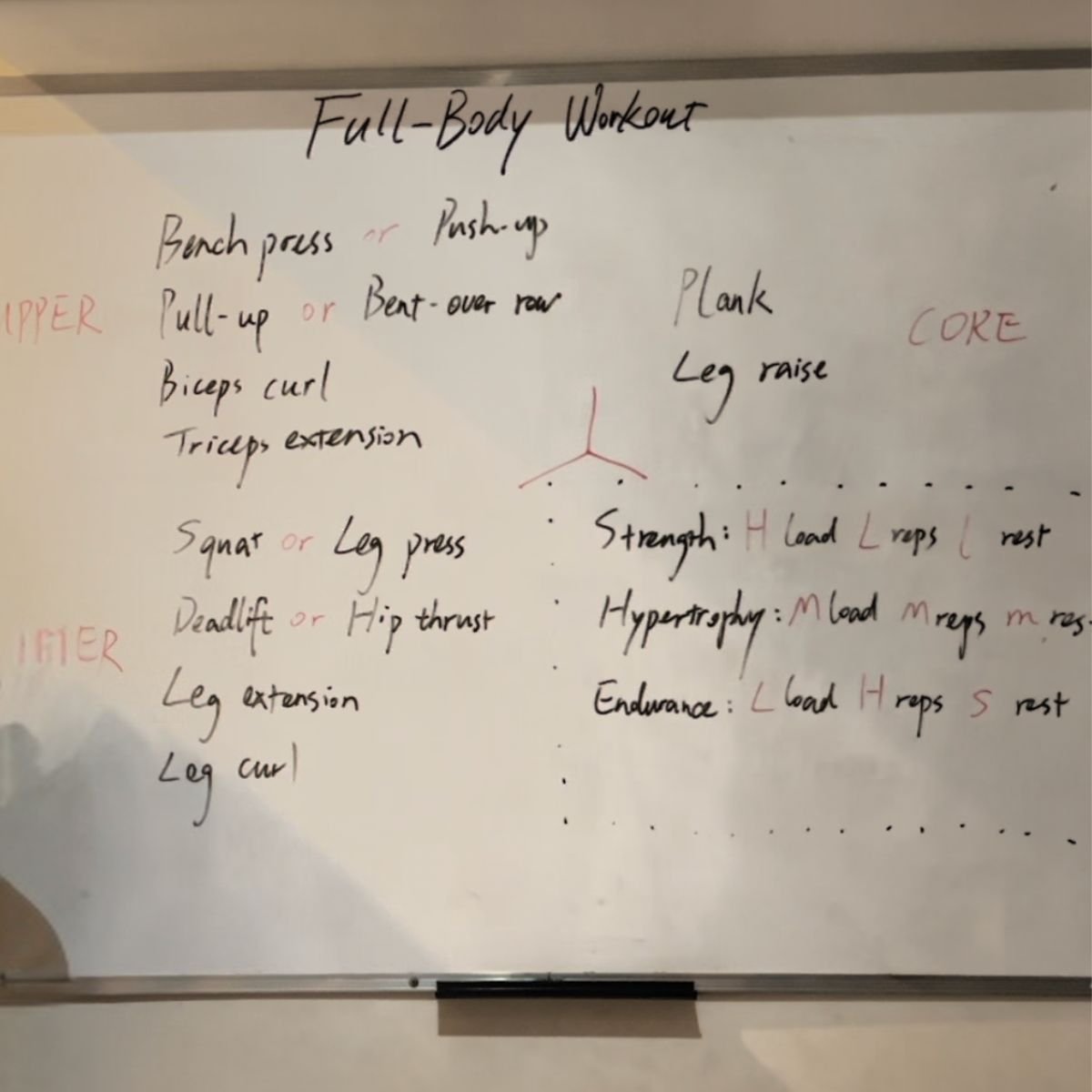Full-Body Workout Routine: A Complete Guide to Total Fitness
Table of Contents
What Is a Full Body Workout?
A full body workout is a training routine designed to engage all major muscle groups within a single session. Unlike split routines, which focus on different body parts in each session, full-body workouts train the upper body, lower body, and core in every workout.
Benefits of Full Body Workouts
Efficiency: Full-body workouts are great for saving time because they engage multiple muscle groups in one session. This makes them perfect for anyone with a busy schedule.
Balanced Muscle Development: These workouts target all major muscle groups, which helps prevent muscle imbalances and ensures a well-rounded physique.
Increased Calorie Burn: Since you're working your entire body in one session, you burn more calories. This is practical for weight loss and fat burning.
Blood Flow: Getting blood to your entire body from different exercises will give you a great muscle pump.
Planning Your Full-Body Workout
Importance of Warm-Up and Cool-Down
Warm-Up: Prepares your body for exercise by increasing heart rate, blood flow, and muscle temperature. Do light cardiovascular warm-up exercises for 5-10 minutes and dynamic stretching before lifting.
Cool-Down: Helps reduce muscle stiffness and soreness. Include 5-10 minutes of light cardio and static stretching.
Periodization Phases for Full-Body Workouts
Strength: Focus on heavier weights with lower repetitions (1-5 reps).
Hypertrophy: Do moderate-heavy load for moderate repetitions (8-12 reps).
Endurance: Emphasize lighter weights with higher repetitions (12+ reps).
Frequency and Duration
Aim for 2-3 times a week, with each session lasting around one hour.
Key Components of a Full-Body Workout
Compound vs. Isolation Exercises
Compound and isolation exercises have different purposes but are both great for developing a well-rounded physique.
Compound Exercises: Engage multiple muscle groups and joints, leading to greater efficiency and functional strength. Examples include bench presses, pull-ups, squats, and deadlifts.
Isolation Exercises: Target specific muscles for focused development. Examples include biceps curl and leg extension.
Balancing Push and Pull Movements
Push Movements: Exercises like push-ups and bench press work the chest, shoulders, and triceps.
Pull Movements: Exercises like pull-ups and rows target the back and biceps.
Including Upper and Lower Body Exercises
Doing both upper and lower body exercises ensures balanced development and prevents muscle imbalance.
Incorporating Core Exercises
The core is the center of our body and is essential for overall stability and strength. Do core exercises at the end of workouts to maximize development.
Progression and Variation
Progressive Overload
Gradually increase the weight, reps, or sets to challenge your muscles and promote growth.
Varying Exercises
Change your exercises periodically to avoid plateaus and reduce the risk of overuse injuries. Incorporate tools like resistance bands, bodyweight exercises, dumbbells, barbells, exercise angles, and tempo manipulation for variety.
Tips for Success
Ensure correct exercise form and technique to prevent injuries and maximize effectiveness.
Avoid overtraining by paying attention to your body's signs of fatigue and allowing for rest.
Ensure sufficient rest and recovery for muscle repair and growth.
Incorporate cardio and flexibility training into strength training to maximize health and fitness.
Nutrition and Hydration
Nutrition
A balanced diet supports your workout routine. Emphasize protein intake for muscle recovery and growth. Include sufficient amounts of carbohydrates for energy, fats for essential cell functions, and plenty of vegetables for micronutrients.
Hydration
Stay hydrated before, during, and after workouts to maintain performance and aid recovery.
Sample Full-Body Workout Routine
| Warm-Up (5-10 minutes) | |||
| Jogging (e.g., jumping jacks) | |||
| Jumping Jacks | |||
| Dynamic stretches | |||
| Upper Body Exercises | |||
| Push-ups or Bench Press | 3 | 12 reps | |
| Pull-ups or Bent-Over Rows | 3 | 12 reps | |
| Biceps Curl | 3 | 12 reps | |
| Triceps extension | 3 | 12 reps | |
| Lower Body Exercises | |||
| Squats or Leg Press | 3 | 12 reps | |
| Deadlifts or Hip Thrust | 3 | 12 reps | |
| Leg Extension | 3 | 12 reps | |
| Leg Curl | 3 | 12 reps | |
| Core Exercises | |||
| Planks | 3 | 1-minute | |
| Leg Raise | 3 | 15 reps | |
| Cool-Down (5-10 minutes) | |||
| Light cardio (e.g., walking, cycling) | |||
| Static stretching | |||
Conclusion
Full-body workouts are an effective and efficient approach to achieving overall fitness, whether your goal is to build strength, improve endurance, or lose weight. Start today and experience the benefits of this well-rounded fitness regimen.

